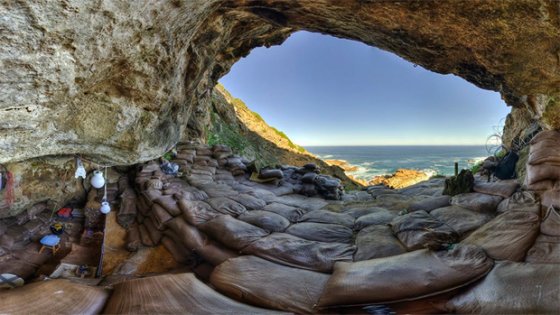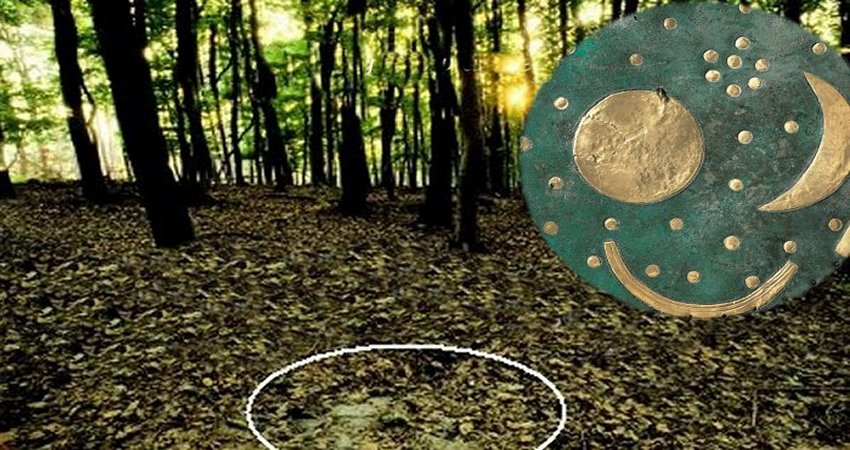Mysterious Blombos Cave Reveals Humans Were Modern Thinkers At Least 100,000 Years Ago
MessageToEagle.com – Located near Still Bay in the southern Cape, South Africa there is a mysterious cave in a limestone cliff.
Its name is Blombos Cave and scientists believe some of the artifacts discovered at the site can shed light on the evolution of complex human cognition.
Blombos Cave became famous when discovered there two pieces of ochre engraved with abstract designs, 75,000-year-old beads made from Nassarius shells, and c. 80,000-year-old bone tools. Some of the earliest evidence for shellfishing and possibly fishing has been discovered at the site and dates to c. 140,000 years ago.
The engraved pieces of ochre are regarded as the oldest known artwork. The application of the mixture is unknown, but possibilities include decoration and skin protection.

The use of abstract symbolism on the engraved pieces of ochre and the presence of a complex tool kit suggests Middle Stone Age people were behaving in a cognitively modern way and had the advantages of syntactical language several thousands of years ago.
Professor Christopher Henshilwood, from the University of the Witwatersrand, Johannesburg, who led the discovery team, said: ‘This discovery represents an important benchmark in the evolution of complex human cognition.

It shows humans had the conceptual ability to source, combine and store substances that were then possibly used to enhance their social practices.
We believe the manufacturing process involved the rubbing of pieces of ochre on quartzite slabs to produce a fine red powder.
Ochre chips were crushed with quartz, quartzite and silcrete hammerstones/grinders and combined with heated, crushed mammal-bone, charcoal, stone chips and a liquid, which was then introduced to the abalone shells and gently stirred.

A bone was probably used to stir the mixture and to transfer some of the mixture out of the shell.”
He added: ‘This is significant because it is pushing back the boundaries of our understanding of when Homo sapiens – people like us – first became modern.
“These finds indicate that humans were certainly thinking in a modern way, in a way that is cognitively advanced, at least 100,000 years ago.”
© MessageToEagle.com










